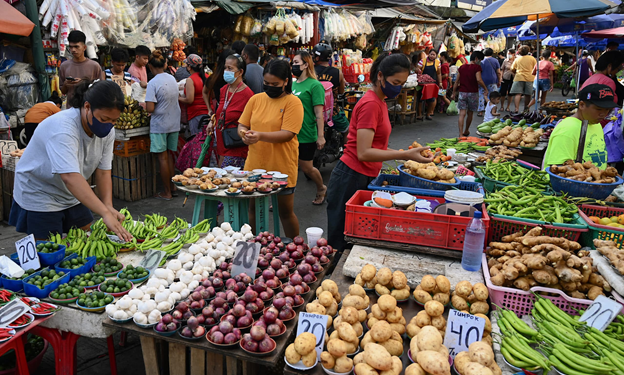Inflation rate eases at 1.3% in May

The Philippine Statistics Authority (PSA) says inflation rate eased further for a fourth month in a row in May.
According to National Statistician and PSA chief Claire Dennis Mapa said that last month’s inflation print —which measures the rate of growth in consumer goods and services costs— slowed down to 1.3% from 1.4% in April.
This was consistent with the Bangko Sentral ng Pilipinas’ (BSP) forecast that the inflation rate will settle within the 0.9% to 1.7% range in May.
It was also the slowest since November 2019, when inflation settled in at 1.2%.
“ It reflects the success of our sustained efforts to protect the purchasing power of Filipinos and ensure a more affordable cost of living,” Department of Economy, Planning, and Development (DEPDev) officer-in-charge and Undersecretary for Policy and Planning Rosemarie Edillon said.
May’s inflation rate brought the year-to-date rate to 1.9%, falling slightly below the government’s ceiling of 2% to 4% for the entire 2025.
“We are optimistic about the government meeting its headline inflation target of 2% to 4% for the year,” Edillon said.
The DEPDev official said the government remains committed to executing the necessary measures to keep prices low and stable.
Mapa said the main reason for the easing of the inflation rate in May 2025 versus April 2025 was the slower increase in Housing, Water, Electricity, Gas and Other Fuels [index] with a rate of 2.3%.
In April, the inflation rate for the utilities index was at 5.4%.
The major contributors to the decline in utilities’ inflation rate were electricity, down to 2.8% from 5.4%, and water at 5.7% from 6.3%.
Also contributing to the overall downtrend was Restaurant and Accommodation Services index, which saw a decline to 2% from 2.3% month-on-month.
The third major contributor to May inflation’s deceleration was the stronger contraction in Transport index at -2.4% from -2.1% in April.
Food inflation, which tracks the price movements of food items in a “basket” commonly purchased by households, was steady at 0.7%—the same level seen in April.
In May 2024, food inflation was at 6.1%.
The top three food groups in terms of contribution to food inflation during the period were as follows:
- Meat and other parts of slaughtered land animals with a share of 216.6% or 1.5 percentage points
- Fish and other seafood with a share of 133.6% or 0.9 percentage point
- Milk, other dairy products and eggs with a share of 55.8% or 0.4 percentage point
Meanwhile, inflation felt by the bottom 30% income households in the country saw no change or a zero percent inflation rate in May.
This was amid the sharper contraction in inflation rates in the Food and Non-Alcoholic Beverages index at -1.6% from -1.2% as well as the further deflation in the Transport index at -1.9% from -1.4%.
For economic class, food inflation also declined significantly to 2% from 8.2% year-on-year.
Tracking the national trend, the inflation rate in Metro Manila also slowed down to 1.7% from 2.4% in April.
Likewise, other regions outside the National Capital Region maintained a low average inflation rate of 1.2%, with nine regions—including Region XII (SOCCSKARGEN), Bangsamoro Autonomous Region in Muslim Mindanao (BARMM), and Region X (Northern Mindanao)—recording lower inflation rates month-on-month.
“To sustain this downward trend, the Marcos Administration reaffirmed its commitment to implementing targeted policies aimed at mitigating inflationary pressures and safeguarding the purchasing power of Filipino families,” said Edillon.
The DEPDev official cited the strengthening collaboration between the Food and Drug Administration (FDA) and the Department of Agriculture (DA) to ensure the availability of safe and effective animal vaccines amid ongoing African Swine Fever (ASF) and Avian Influenza outbreaks.
The DA’s Bureau of Animal Industry is assessing the controlled ASF vaccination campaign.
The DA and the FDA have both expressed optimism on the commercial rollout of the ASF vaccine before the end of the year.





